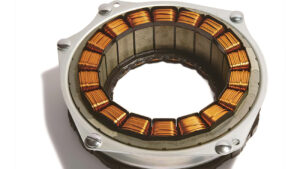In the ever-evolving landscape of automotive engineering, traditional brake technologies are being challenged and pushed to their limits. Alongside conventional braking systems, unexpected and unconventional approaches are emerging to reevaluate and redefine the capabilities of brake technologies. This article explores the concept of Beyond Magnetism, an innovative approach to brake technologies that is completely dissociated from the conventional magnetic forces. With a focus on uncovering the most current advancements, this piece delves deep into the methodologies, potential benefits, and future implications of breakthroughs that aim to transform brake systems in ways we’ve never seen before.
Questions to Ponder
Are the traditional magnetic braking principles limiting automotive systems’ performance and efficiency?
Can we harness superconductivity to develop magnetically operated brakes with unprecedented efficiency?
What is the potential for geometrically varying magnetic fields to enhance braking processes?
- How is active magnetic bearing technology contributing to the innovation in brake systems?
Unpacking Below Magnetism: The Ages of brake Techologies
1. Traditional Mechanisms
At the heart of every vehicle is the conventional braking system, primarily relying on friction forces to slow down and eventually halt the motion. However, as automotive demands grow increasingly expansive, so do the limitations of the traditional brakes. These mechanical brakes demand high friction, which inevitably results in wear and tear, leading to reduced efficiency and performance.
2. Magnetic Breaks: An Evolution of Traditional Systems
Magnetic braking provides an alternative to conventional friction-based braking. These systems utilise permanent or electromagnets to generate friction force and stop the vehicle. This method is environment-friendly, as it requires little maintenance and can function without friction, reducing wear and tear to zero.
3. Active Magnetic Bearings: A Leap into Advanced Technology
Active magnetic bearings promise to revolutionize brake systems by leveraging SQUIDs (Superconducting Quantum Interference Devices) for improved precision. This technology relies on electric currents flowing through superconductors, generating force fields that can levitate the rotating components without any physical contact. These bearings can optimise friction control, achieving high efficiency in braking processes.
4. Geometrically Varying Magnetic Fields: Innovations in Efficiency
The innovation doesn’t stop with magnetics; researchers are now investigating geometrically varying magnetic fields. These dynamic field patterns allow for more efficient braking processes, targeting applications where magnetic forces are required at multiple points. This approach opens doors for further efficiency gains beyond sheer force.
5. Leveraging Quantum Mathematics for Advanced Brake Services
Quantum computing is being investigated for its potential role in brake system optimisation. Quantum mechanics holds the potential to enhance control and predict brake performance at a molecular level, leading to a more precise and adaptable braking system.
The Future: A Vision of Sustainable Brake Technologies
As the automotive community pushes the boundaries of sustainability, brake technologies sit at a pivotal intersection. Innovations that focus on magnetic forces beyond traditional mechanics promise not only efficient braking processes but also significant strides towards reducing environmental impact.
Case Studies Showcasing Green Brake Technologies
From Tesla’s electric vehicles that utilise unique motor-brake integration to LG Chem’s experimental magnetic charging systems, global brands are embracing magnetic innovations for greener, more sustainable brake technologies.
Frequently Asked Questions (FAQs)
What are the benefits of Beyond Magnetism in brake systems?
- Enhances efficiency by reducing mechanical wear and tear.
- Facilitates sustainable energy use by minimising frictional heat.
- Enables precise control through advanced magnetic field manipulation.
How does active magnetic bearing technology alter traditional brakes?
- It eliminates physical contact between moving parts, reducing wear.
- Active SQUIDs allow for dynamic control of the magnetic fields, improving efficiency and responsiveness.
Does magnetic braking have implications for electric vehicles?
- Yes, for electric vehicles, magnetic braking can lead to lighter components and reduced energy consumption.
- With no moving parts, it also promotes a quieter in-cabin experience.
Can quantum computing enhance the functionality of brake systems?
- Quantum computing can predict and control magnetic interactions at the molecular level, optimising performance and enhancing responsiveness.
Summary of Key Takeaways
Beyond Magnetism proposes a transformative shift from traditional mechanical brakes to innovative magnetic systems, significantly impacting automotive performance and sustainability.
Research in superconducting and quantum technologies holds the promise of developing magnetic braking systems that operate more efficiently and with greater precision.
Active magnetic bearings, leveraging superior magnetic field control, could redefine high-efficiency electrical systems for transportation.
- Continuous exploration of geometrically varying magnetic fields and quantum computing could lead to breakthroughs in more sustainable and adaptive braking systems.
By delving into an unconventional approach to brake technologies, the automotive sector stands poised at the brink of a revolutionary change, promising not only enhanced performance but also a sustainable future for mobility as we know it.
Are you ready to witness the breathtaking capacities that Beyond Magnetism might introduce into brake systems?

